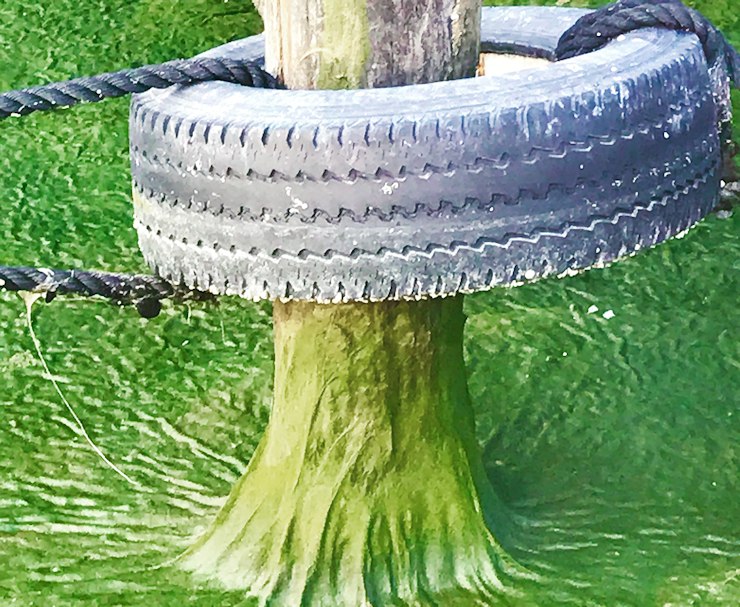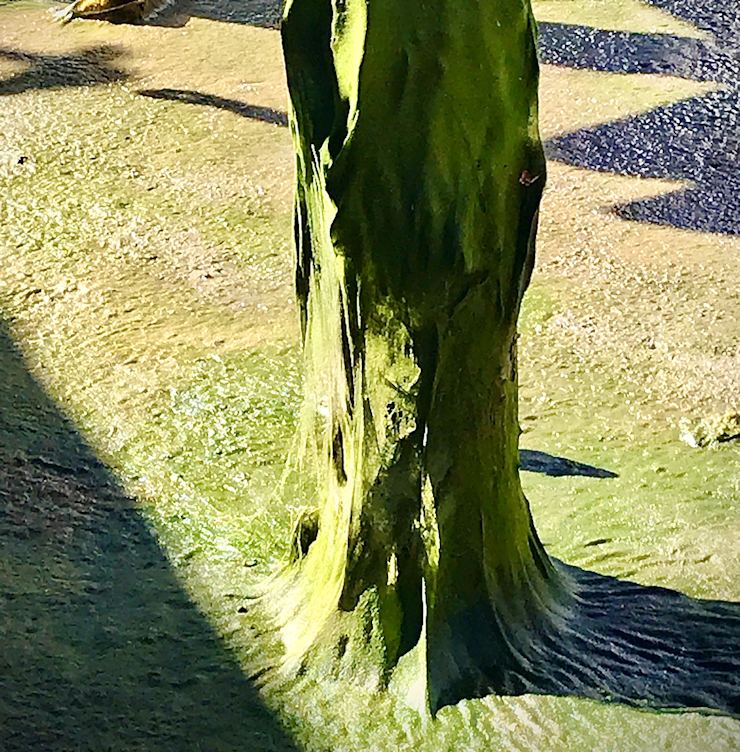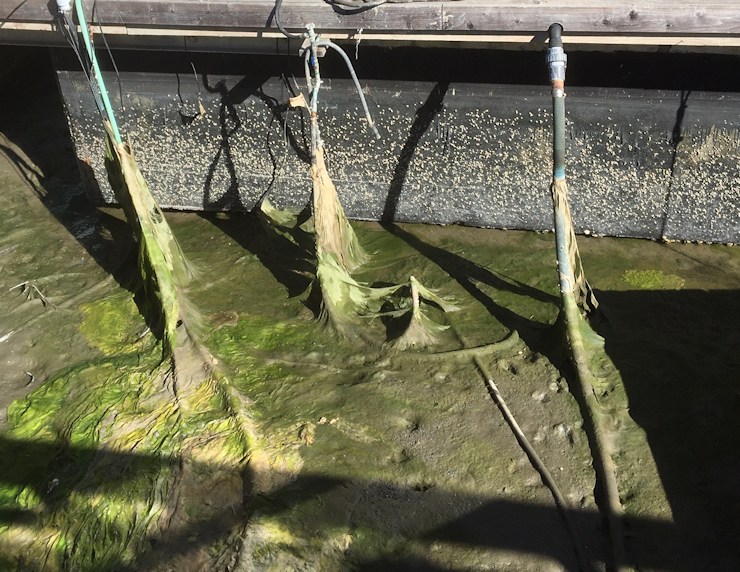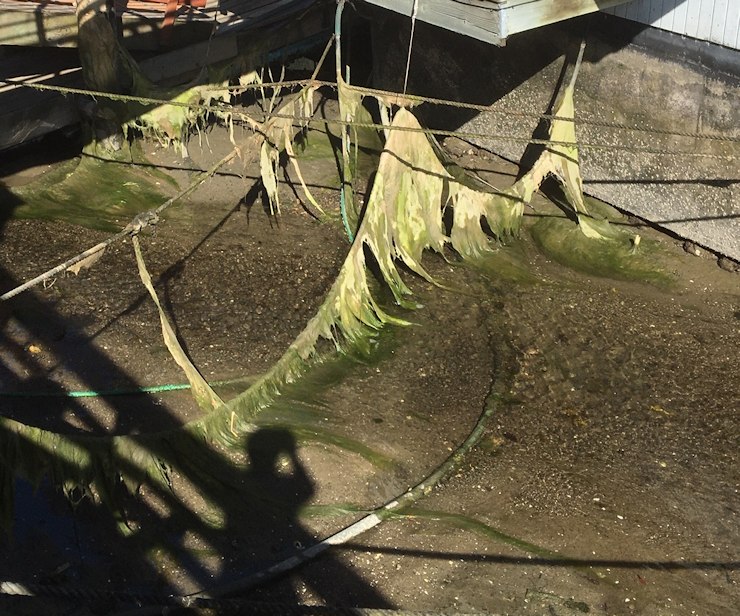Last week the floating homes community experienced a massive algae bloom—the largest in my 40-year residency here.
The surface of the Bay off many homes began looking like a lawn, and low tide left pilings, lines and other fixtures draped in eerie green cloaks. Oddly, the local media has ignored this phenomenon so far, so Jen Gennari and I decided to look into what it’s all about.
On NextDoor, Karina Nielsen, Director of the San Francisco Estuary Institute (SFEI, formerly Romberg Tiburon Center), said the algae appeared to be Rhizoclonium riparium, “a green macroalga that’s a uniseriate filament (just one cell wide, all lined up one after another in a long chain of cells). It forms skein-like mats. Can be a bit stinky as the mats die off but not harmful.” She added, “Warmer than usual water temperatures in SF Bay this spring may be promoting this green seaweed bloom. We know the water is warmer thanks to long-term oceanographic observing sensors funded by CeNCOOS [The Central And Northern California Ocean Observing System].”
Ryan Phelan of South 40 Pier observed that SFEI scientists will be doing some additional studies now on Richardson Bay. They believe that this seasonal bloom was likely “exacerbated by the clear water we are lucky to have these days.”
San Francisco Baykeeper is also investigating conditions in Richardson Bay. If you ever notice pollution in the water, you can report it on the Baykeeper website.
Curtis Havel, Harbormaster of the Richardson Bay Regional Agency (RBRA), confirmed that this was an unusually heavy bloom, but said he hadn’t heard any reports of toxicity from the Environmental Health Service or Water Quality Control Board, which both test local waters periodically. Havel feels that with more people home gardening during the Shelter in Place restrictions, more nutrients such as phosphates may be seeping into the Bay.
The Bay Conservation and Development Commission website states that biostimulants such as nitrogen and phosphorus “act as fertilizers to the organic materials in water. Plants and animals take in these elements and convert them along with carbohydrates into additional body tissue. Large amounts of biostimulants can, when combined with sufficient organic matter, create algae blooms.”
This week, much of the remaining algae is bleaching to a dull white and receding. If past experience is any indicator, it will soon begin breaking down into brown clumps that resemble wastewater runoff. Not pretty, but not harmful.









